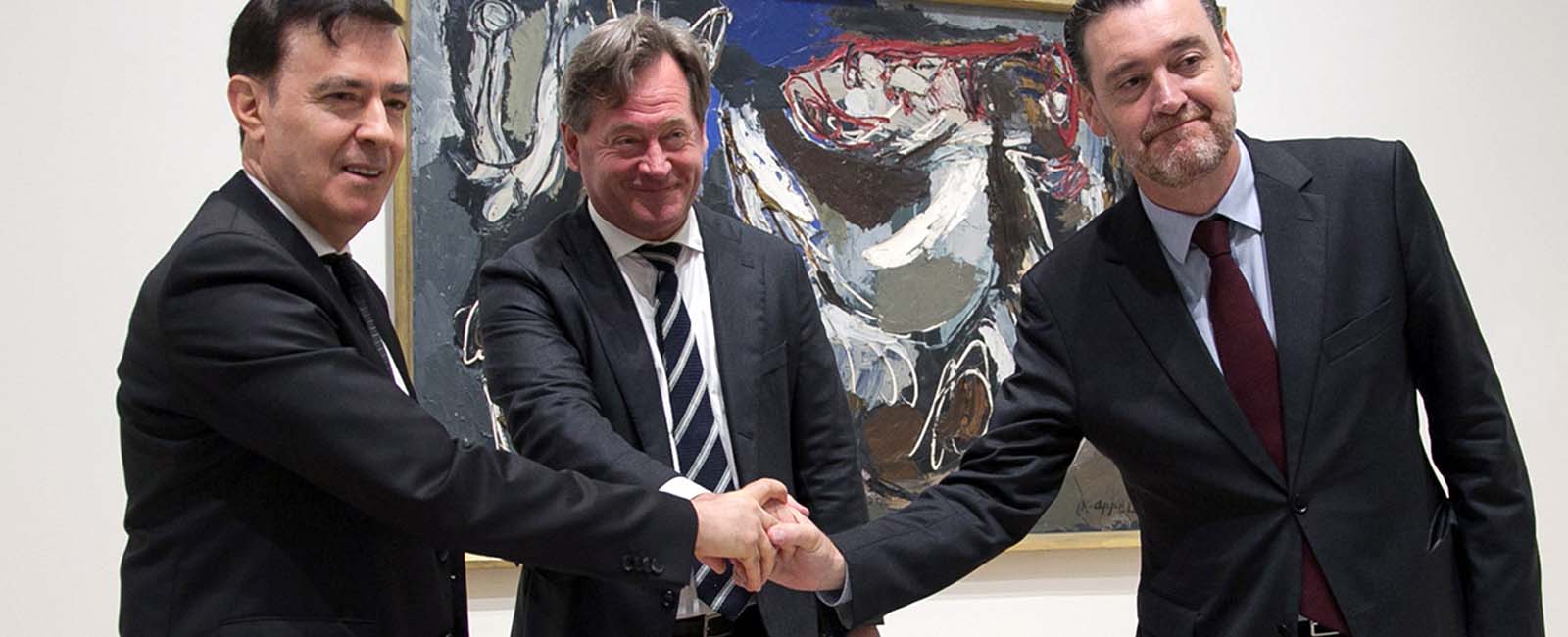
‘Different Trains’ launches the Video Arts and Digital Creation Program co-organized by the BBVA Foundation and Museo de Bellas Artes de Bilbao
The Museo de Bellas Artes de Bilbao and the BBVA Foundation renew their partnership agreement with the launch of a Video Arts and Digital Creation Program, kicking off with the exhibition Different Trains, a work by artist Beatriz Caravaggio based on the music of the same name by composer Steve Reich. The exhibit was open to visitors from 26 April to 25 September, 2017 at the Museum (Museo Plaza, 2, Bilbao).
26 April, 2017
The collaboration between our two institutions dates from 2002. This partnership with the museum, which numbers the BBVA Foundation among its trustees, is framed within the cultural support program being rolled out with various institutions to foster the creation and diffusion of innovative means of artistic expression distinctly of our time.
In recent years, the BBVA Foundation has expanded its focus to the promotion of video art and digital creation, a format – that of the moving image – which is at the leading edge of contemporary artistic practice. Yet video art’s primacy in today’s cultural scene has not earned its practitioners the support and recognition they require. And it is to bridge this gap that the BBVA Foundation has launched its annual Multiverso grant scheme, as well as commissioning one-off projects like Beatriz Caravaggio’s Different Trains.
Steve Reich, winner of the BBVA Foundation Frontiers of Knowledge Award in Contemporary Music in 2013, composed this work in 1988 for string quartet and pre-recorded tape. Conceived in three movements running into each other, the first third evokes the train journeys – from New York to Los Angeles – that the composer made between 1939 and 1942 to visit the homes of his divorced parents. These experiences are relived in memory as a thrilling, romantic childhood adventure which contrasts with the second movement, impassioned, harrowing and dystopian, exploring the likely fate of a Jew like him in the Europe of the time, when the trains would have been one-way vehicles of deportation to the Nazi extermination camps. The final movement refers to the end of the war period, but also to the persisting doubts, anxieties and memories of the crimes and devastation of the Nazi regime.
Caravaggio’s visual recomposition, comprising a rich wealth of contemporary archive material shown on a three-way split screen and synchronized with the Kronos Quartet’s 1989 performance of Different Trains, succeeds in bringing the score to fresh life.
The video artist has undertaken the daunting task of sifting through and organizing footage on the deportation of the Jews, the extermination camps and their liberation, filmed by the Nazis themselves and, later, by the Allies. The result is a powerfully moving narrative, in which the ever-present trains transport us from landscapes of nature to the urban world of the post-war period, contrasting scenarios that reflect the intervening horrors of the genocide.
Steve Reich has this to say about the quality of Caravaggio’s work: “Since we live in a time when many people want a visual accompaniment for music – even at concerts – several people have created videos to accompany my piece Different Trains. To be honest, most of them I haven’t even seen, and those I have are generally just a distraction from listening to the music. The one exception is the brilliant multi-channel video by Beatriz Caravaggio which really works as something to watch on its own and as a way to intensify listening to Different Trains. She has taken documentary footage and through multi-channel placement and fine editing, made a thoughtful and moving piece. Bravo Beatriz!“
